Stevia is a sugar substitute made from the leaves of the Stevia plant. Stevia, also known as Stevia rebaudiana, is a plant member of the chrysanthemum family, a subgroup of the Asteraceae family. Although Stevia looks like an average green plant, it’s an interesting choice for an herb garden because of its leaves’ natural, calorie-free sweetness.
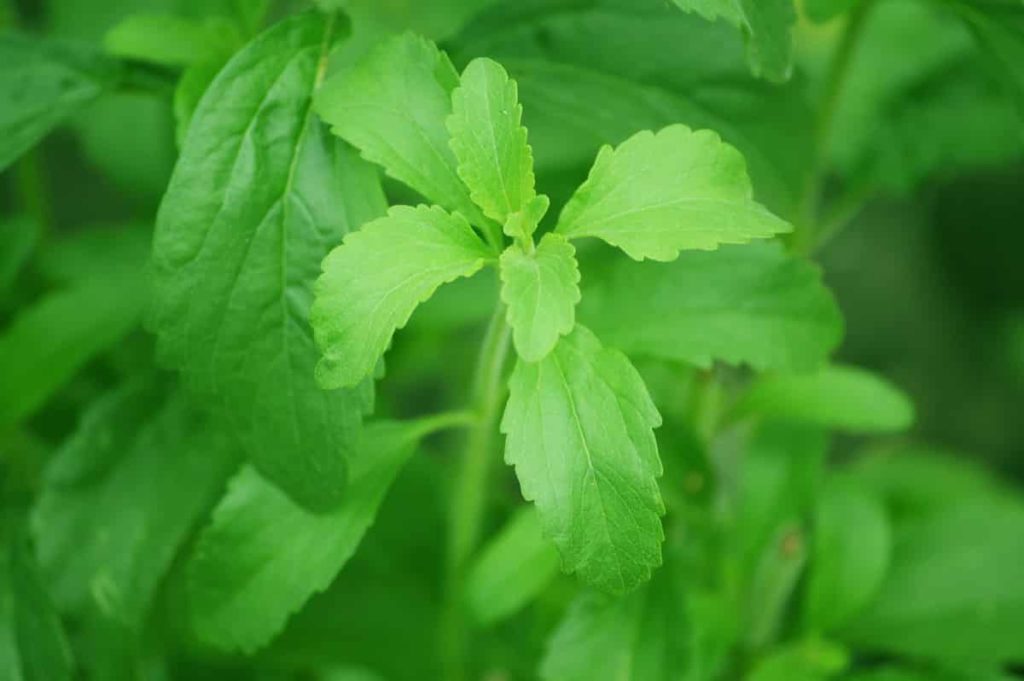
How to grow Stevia from scratch for beginners
Is Stevia easy to grow?
- Stevia is an easy-to-grow herb that’s hardy zones 8-11 and will be happy in a container, making it easy to bring indoors for the winter in colder climates.
- Stevia grows well in full sun, well-drained soil, and even moisture until the plant is fully established. Once this is done, Stevia is a low-maintenance plant.
Are there different types of Stevia plants?
- SRB-123: Grows well in Deccan Plateau. The variety is mainly harvested 3-4 times a year. It has a glucoside content of @9-12%.
- SRB-512: Grows well in northern latitudes. The variety is mainly harvested 3-4 times a year. It has a glucoside content of @9-12%.
- SRB-128: Grows well in South and North Indian climates. It has a glucoside content of @14-15%.
- MDS-13 and MDS-14: Grows well in Indian climatic conditions. It requires a high temperature and a short or dry rainy season.
What kind of soil does Stevia like?
Light, loamy soil with excellent drainage is as important for growing Stevia as for most herbs. Plant in a raised bed, without winter freezes, in temperate climates. Plant in a container with a gravel bottom in any climate to ensure good drainage. In the loose, loamy, and well-drained soil that the Stevia plant prefers, it will grow 1 to 3 feet tall, depending on the length of your growing season. Apply mulch to prevent the Stevia plant from drying on hot summer days. Container-grown Stevia plants will benefit from the same plant food and mulch.
Can I root Stevia in water?
Some people root Stevia stem tips in water, but planting small cuttings in a wet seed-starting mix or perlite is faster. Work with small side branches extending down from the main trunk with a slip of stem tissue.
Does Stevia need sun or shade?
- Stevia needs full sun to thrive, so choose a spot with at least six hours of sunlight per day. Prepare the soil bed. Regarding soil quality, Stevia grows best in soil rich in organic matter.
- The first thing you need to do is decide where to grow Stevia in your garden. It would help if you chose an area that gets full sunlight. It needs 6 to 8 hours of sunlight each day, but more is preferred if possible.
- If you live in an area with very hot summers, it may be beneficial to plant Stevia in a spot that receives afternoon shade. It is the only exception to the need for full sunlight.
Does Stevia like a lot of water?
- Don’t let your Stevia soil dry out completely, but standing water or wet soil should be avoided, as this will encourage root rot. Once established, Stevia is a low-water, low-maintenance plant.
- Once established, Stevia is a low-water, low-maintenance plant. Cut the Stevia leaves when they are big enough to use.
In case you missed it: Stevia Farming in Polyhouse, Cultivation Practices
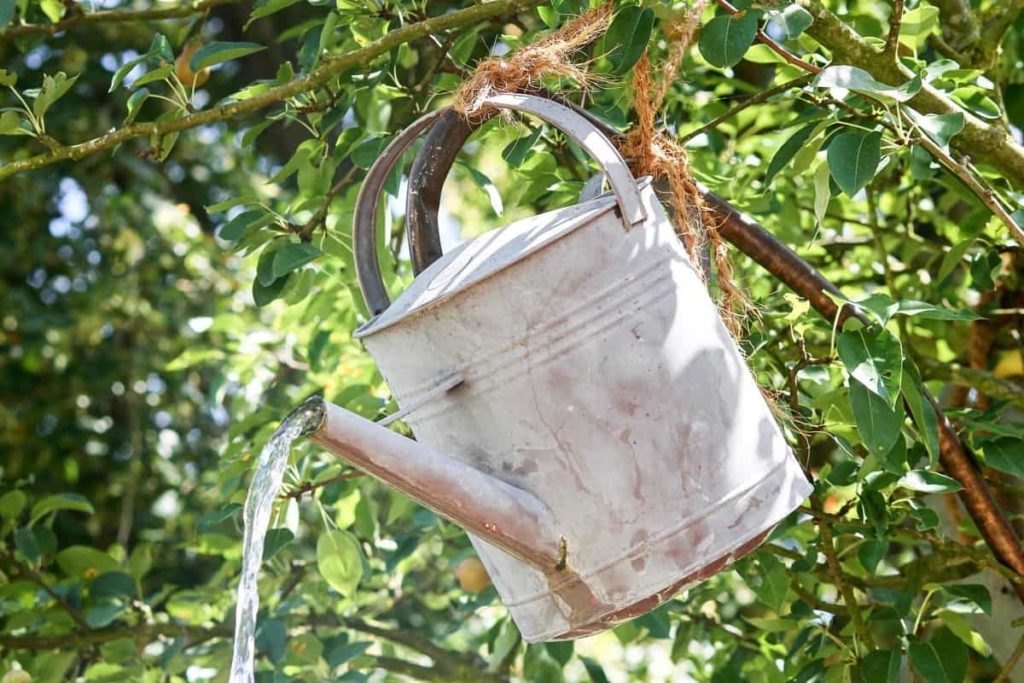
Can Stevia grow from cuttings?
- You can plant Stevia seeds or cuttings after the last danger of frost has passed.
- To start your Stevia early, plant seeds or cuttings indoors and later transplant them into the garden.
How fast does the Stevia plant grow?
Stevia is ready to pick about 40 days after transplanting. Therefore, it is best before flowering. Plant leaves are sweeter than the stem, so only the leaves are usually used. They can be consumed fresh to flavor drinks or used as a garnish.
Stevia plant needs
- Full sun prefers above 15 hours of light to maximize plant growth. Light afternoon shade is beneficial in areas with hot summers.
- Well-drained soil or potting mix. Raised beds often work well for these plants.
- Compost or organic matter in the soil – skip chemical fertilizers, leading to lush greens with less sweetness. More fertile plants are also more susceptible to disease.
- Constant soil moisture – Wild Stevia grows near water bodies, where the soil is moist but not soggy. Organic mulch can help maintain soil moisture.
- Room to grow – Plants are 1-3 feet tall (shorter in cooler areas) and about as wide. In garden beds, use pots a foot or more in diameter or space plants 18 inches apart.
- Frost protection – Plants can overwinter in hardiness zones eight and higher. For cold weather, bring plants inside before a hard frost if you want to keep them yearly.
How long does it take for Stevia to germinate?
- Sow 8-10 weeks indoors before the last frost, or direct sow in late spring.
- Seeds should germinate in 10-16 days.
- Grow in well-drained soil in a warm spot in the garden or in large containers in full sun.
Is it hard to grow Stevia from seed?
Sowing Stevia seeds indoors
- Sow Stevia seeds indoors about 8 to 10 weeks before the last frost in the spring.
- Sow seeds ¼ inch deep in seed starting formula. For other plants, sow double or triple the amount you would typically seed as germination rates may be slower than other seed types.
- Plants emerge in 14-21 days.
- As soon as the plants emerge, provide plenty of light on a sunny windowsill or grow 3-4 inches under fluorescent plant lights that are 16 hours a day and 8 hours off at night. Increase the light as the plants get taller. Incandescent bulbs will not work well for this process because they will get too hot.
- Stevia plants do not need much fertilizer; feed when they are 3-4 weeks old using a starter solution (half the strength of a complete indoor food) according to the manufacturer’s instructions. Make sure not to overwater when the soil surface is dry.
- Have plenty of room to grow roots. Before planting in the garden, Stevia seed plants need to be “hardened off.” Acclimate the young plants to outdoor conditions by moving them outside to a sheltered spot for a week. Firstly, make sure to protect them from wind and hot sun. If there’s a risk of frost at night, cover or bring the containers indoors, then move them outside again in the morning. This hardening hardens the plant’s cell structure and reduces transplant shock and irritation.
How to grow Stevia from cuttings?
- Firstly, take a small branch of Stevia with two or three leaves on top.
- Rooting hormones are best for every Stevia plant but whether or not to use rooting hormones on Stevia is your choice. You can also get good results without using rooting hormones on Stevia.
- You can grow Stevia in many soil sources such as potting mix, vermiculite, and potting soil.
- After sowing the cuttings, keep the soil moist for 3-4 weeks as the roots develop during this period. It would help if you grew stems from 3 to 4 cuttings in different pots at a time.
Does the Stevia plant come back every year?
- Stevia is a perennial plant, which means it will come back year after year. Though, the leaves stop producing much after year two. It is why many people recommend that you reapply every two years.
- Stevia doesn’t have as many different varieties as some plants.
In case you missed it: Stevia Cultivation Training Institutes in India
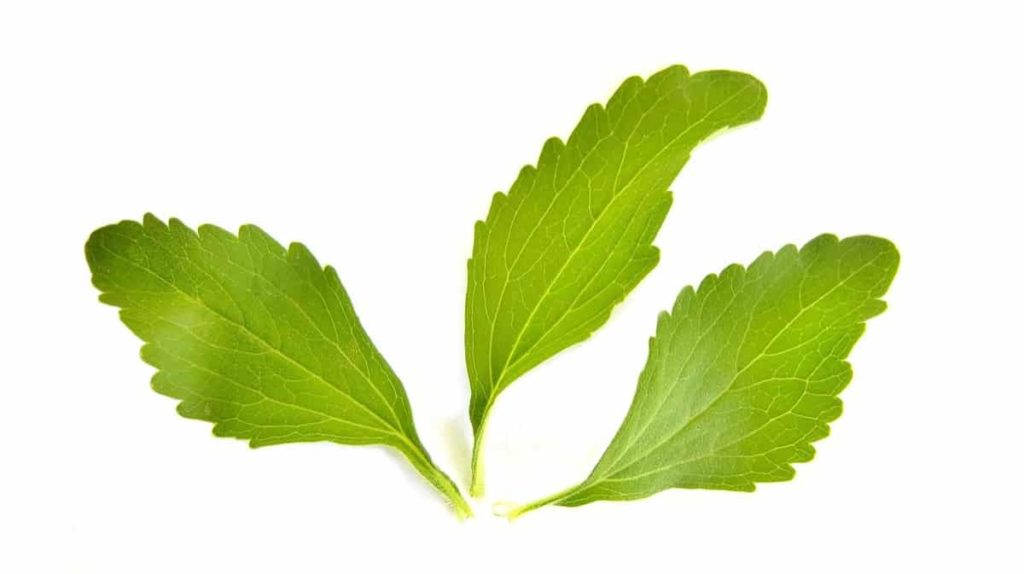
How do I keep my Stevia plant healthy?
- Grow this sun-loving plant in an area with plenty of light and rich, well-drained soil with a pH of 6.7 to 7.2.
- Feed regularly with water-soluble plant food to promote healthy leaf production.
- Water the Stevia plant once the top inch of soil is dry, but do not let the soil soak.
Will Stevia survive winter?
A tender perennial by nature, Stevia is a warm-season plant that only survives outdoors where the ground doesn’t freeze in winter. Growing Stevia or Stevia plants is not an option for cold climate gardeners. Stevia will usually survive the winter with a thick layer of mulch to protect the roots. If you live in a warm climate (zone 9 or higher), growing Stevia plants in the winter is not a problem, and the plants do not need protection.
Stevia plants in colder regions must be wintered indoors. Stevia grows indoors before the first frost in the fall if you live in a cooler climate north of zone 9. Trim the Stevia plant to a height of about 6 inches (15 cm), then transplant it into a pot with drainage holes, using a good quality commercial potting mix. You may be able to grow Stevia on a sunny windowsill, but without adequate light, the plant is likely to be stunted and less productive. Most plants do best under fluorescent lights. Stevia prefers room temperature above 21C.
Chop the leaves to use as needed. When you’re sure all danger of spring frost has passed, move the plant back outside. If you have never grown Stevia, it is usually available in greenhouses or nurseries specializing in herb plants. You can plant seeds, but germination is slow, difficult, and undependable. Additionally, the leaves grown from seed may not be as sweet. Stevia plants often die back after the second year, but growing new plants from healthy, mature Stevia is easy.
Can Stevia be grown indoors?
- Stevia is an alternative to processed sugar. At just over a foot tall and slightly wider, Stevia can be grown as a houseplant and a garden plant so that you can start seeds anytime for houseplant use.
- To grow Stevia in the garden, start seeds indoors in late winter or direct sow them in mid to late spring. For growing Stevia in containers, give your Stevia plant at least a 12-inch pot containing a quality potting mix. After that, please place it in full sun and water whenever the top inch of potting soil feels dry.
What zone does Stevia grow in?
- Stevia is hardy in USDA plant hardiness zones 11 and above and does best in semi-humid locations with acidic, well-drained soil.
- Space plants 18 inches apart in a location where they will receive full sun.
- Stevia grows best when the soil pH is between 6.7 and 7.2.
How do you fertilize Stevia?
- Adding a layer of compost or favorite mulch around each plant will help keep the shallow feeder roots from drying.
- Stevia plants respond better to fertilizers with a low nitrogen content than phosphoric acid or potash.
- Stevia plants grow best when they are provided with plenty of nutrients.
- Follow the directions on the packet and add the recommended amount of compost or compost around the base of your plants. It is important not to add more fertilizer to the soil than recommended as this can damage the Stevia.
- Buy organic fertilizers and compost from your local gardening store. Organic fertilizers work best because they release nitrogen slowly. If the directions tell you to mix the compost or compost into the soil, use a trowel or spade to mix it into the soil.
In case you missed it: Stevia Cultivation Project Report, Cost and Profit
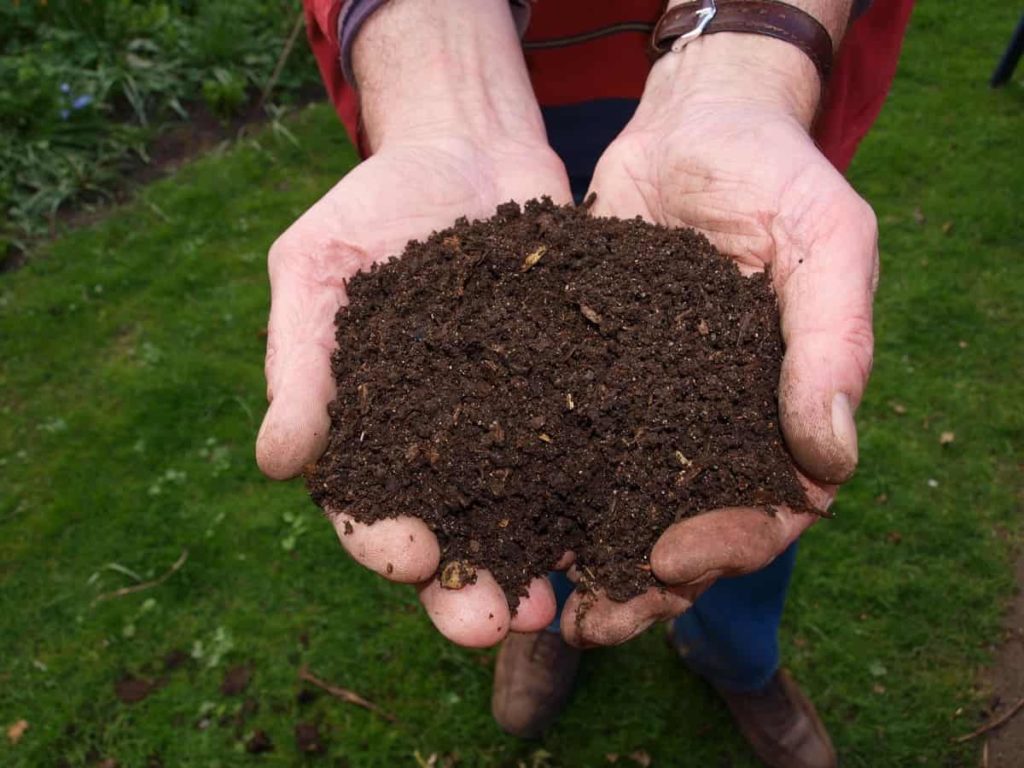
Can Stevia be grown hydroponically?
- The Stevia plant is a perennial that can be grown indoors/outdoors in a hydroponic system. A plant can play a big role in reducing the consumption of refined sugar.
- Gardeners can start from seed or root cuttings and grow in a cocopeat, and vermicompost mix grows media or hydroponic nutrient solution alone. This herbal sweetener is known for a 50% or less germination rate and is a slow grower if Stevia seeds germinate.
- It is best to take cuttings from new growth that is not too green or too woody. If the cutting is green and fresh, it will wilt quickly, and if it is too woody, it may have trouble rooting.
- Before propagating Stevia, examine the plant from which it will be harvested. New plants will be transplanted. Once the established Stevia plant has passed this test, it’s time to propagate fresh cuttings.
- A leaf node is an active region where the leaves emerge from the stem. Cuttings should be about 3-5 inches long.
How do you propagate Stevia?
- It can be propagated using seeds, plant cuttings, division of suckers, and tissue culture.
- Propagation by seed is easier and more economically feasible. However, morphological and chemical variation exists among individual plants of a seed-raised population.
- Clonal propagation by cuttings and tissue culture provides the same production quality, but the cost of planting material is high.
What is the planting season for Stevia?
- The best time for sowing is February to March.
- Plants are spaced 18 inches apart, and row spacing is 20-24 inches.
- The crop is transplanted in the field 6-7 weeks after sowing.
How do you start a Stevia farm?
Growing tips for Stevia
- During the first 2 months of planting, pinch the tops of the plants every 3 weeks. It will result in a bushier, better-branched plant. If possible, take a pinch early in the morning.
- After planting, dig up the Stevia and do not move it. Mulch the Stevia well to protect its shallow root system from the sun’s heat.
- Fertilize with a regular (non-lawn) plant food during the growing process.
- Pinch off individual plant leaves as you need them during the growing season.
- As soon as the flower buds appear, cut the entire plant from the base and hang it upside down in a warm, dry place for a few days. Do not pinch the buds or try to delay flowering. If you do this, the leaves will lose their sweet taste.
- Harvest Stevia in the morning, when the plant’s sugar content is high.
Can I grow my Stevia?
- This sweet, low-calorie herb grows well in the ground but is also an excellent container plant.
- Stevia requires a long, warm growing season to produce an abundance of leaves, so it’s best to start seeds indoors before the last spring frost. Although the seeds require little maintenance, they must be exposed to light and kept in warm, moderately humid conditions to germinate successfully.
Is Stevia farming profitable?
Stevia farming is a profitable business. An average fresh biomass yield of 2.0-2.5 tonnes/ha is obtained from two crops in the first year and increases to 4.0-4.5 tonnes/ha in subsequent years.
Stevia’s average dry leaf yield is 3.0-3.5 tonnes per hectare per year, with a market price of about Rs. 100 to 120 per kg, net profit of Rs. 2.0-2.7 lakh per hectare. The maximum number of leaves is produced in the third or fourth year of planting. The average net income from Stevia cultivation has been observed to be 2.0-2.5 times higher than conventional crops.
Stevia care and feeding
- Stevia plants do best in a rich and loamy soil. Because feeder roots are so close to the surface, it’s a good idea to add compost for extra nutrients if the soil in your area is sandy.
- In addition to being sensitive to cold during their growth phase, excessive moisture levels can also adversely affect roots.
- Frequent light watering is recommended for Stevia plants during the summer season.
In case you missed it: Stevia Plant Farming Information Guide
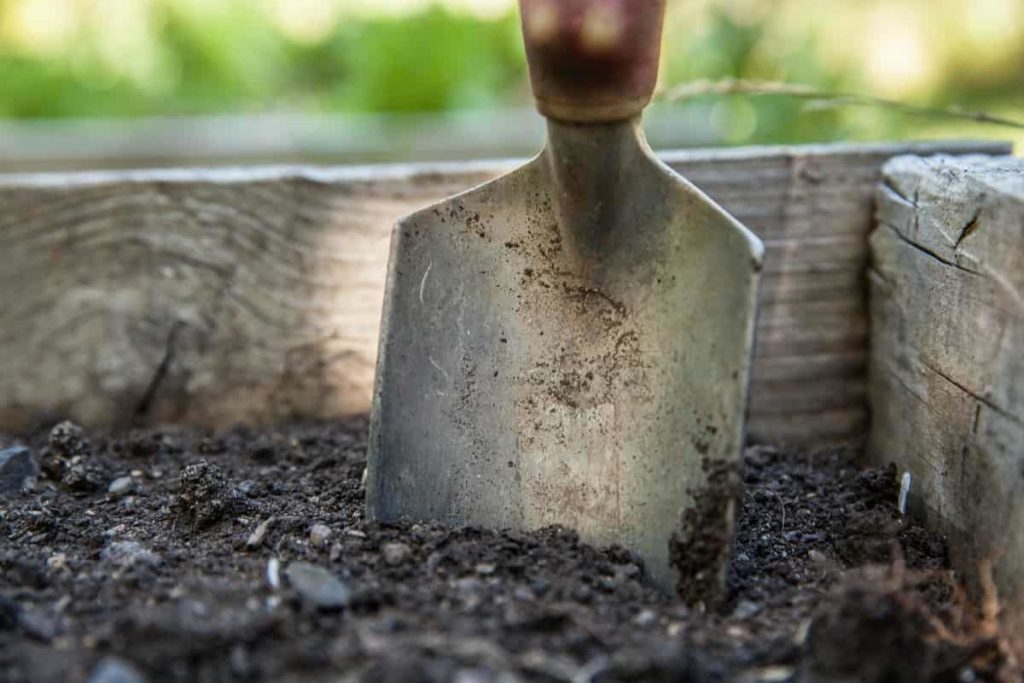
What is the cost of Stevia?
Stevia extract is now imported at around Rs. 5.5-6.5 lakh for a 100 kg consignment.
How do you prune Stevia?
- You don’t have to prune the Stevia plant, but it grows better and will maximize leaf production if you do.
- Prune the plant several times to encourage branching.
- The first pruning should be done when the plant is about 8 inches tall. Then, please do it again in early summer.
How often do water Stevia plants?
It would help if you watered your plants regularly. While Stevia doesn’t like wet soil or standing water, it doesn’t like dry soil. So, stick your finger into your soil to see if the top inch of soil is dry. If so, now is the time to water your plant. If not, check back the next day. One thing to note is that the leaves on Stevia plants wilt easily, especially when the soil is dry. The good news is that once you water it, the plant grows faster. However, wilting stresses the plant, so avoid it as much as possible.
How do you harvest Stevia without killing the plant?
- Remove the leaves from the stems and use the leaves to make a fresh tea or liquid extract. You can also dry the stems and bundles by tying them up and hanging them in a cool, dark place until the leaves are dry. In the fall, harvest the entire plant after the weather cools down.
- Like other herbs, regular pruning of Stevia leaves is good for the plant’s overall health. Removing the stem ends encourages lateral growth, making the plant bushy and vigorous. Just be sure not to cut more than a third of the plant.
- Harvest early in the day for the best flavor. Using sharp, sterile scissors or even your fingernails, remove the stems just above the node where a pair of leaves grows.
- Do not leave a piece of stem on the plant. For best flavor, cut basil leaves before the plant’s flower. If they bloom, remove the flowers and wait a few days to harvest.
- Immediately you can use the fresh leaves or store them for future use. Stevia is preserved by drying the leaves or making Stevia extract. Store the dried leaves in an airtight container.
- The leaves are the sweetest in the cool fall temperatures. They also taste best before the plant blooms. Dry the Stevia to preserve plenty of heat and make it easier to use. Cut the stems and then strip off the leaves and tender tips of the stem.
- Place them outside on a dry, sunny day on a loosely woven cloth or non-metallic screening. A day should be long enough for the leaves to dry. Be sure to bring them inside before the dew wets them again. Once the Stevia leaves are crisp, crush them by hand or powder them in a food processor. Store in an airtight container. Although the powdered leaves will not dissolve, they are an excellent way to sweeten your drinks and foods.
In case you missed it: How To Protect Tulsi in Winter Season in the USA: From Dying, Indoor Care, and Outdoor Care
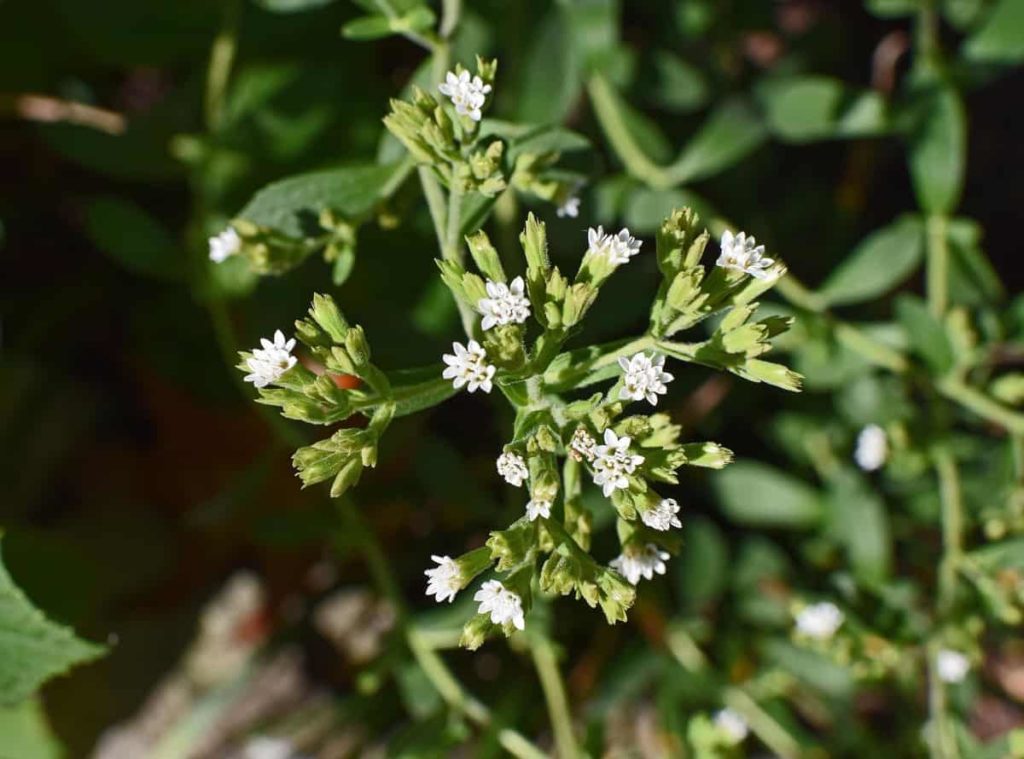
Why is my Stevia plant dying?
Stevia does not like soggy soil, so ensure it has good drainage, or the root may rot. A sure sign of rot is wilting that the plant does not recover after watering.
Stevia dies due to frost – If you live in a cold climate, don’t be surprised if your Stevia freezes to the bone and dies completely. Therefore recommend bringing the plant indoors during the winter or covering it with frost until it goes dormant. Then, hopefully, back next year. If not, apply Stevia annually. You can grow it from seed every year to reduce the cost.
Stevia dies from wet soil – It is important to plant Stevia where the soil is well drained. Too much water to the plant will rot the roots. If this happens, your plant will die. To prevent this from happening, it is important to use quality soil that is loose and well drained.
Conclusion
Growing Stevia is a fun and easy process. Buy plants from a nursery and plant them in a warm, well-drained location. Plants are fairly low maintenance and are only watered when the soil is dry. The above are the important factors affecting the growth of Stevia plants.
- Economical Aquaculture: A Guide to Low-Budget Fish Farming
- 15 Common Planting Errors That Can Doom Your Fruit Trees
- How to Make Houseplants Bushy: Effective Tips and Ideas
- Innovative Strategies for Boosting Coconut Pollination and Yield
- Pollination Strategies for Maximum Pumpkin Yield
- The Complete Guide to Chicken Fattening: Strategies for Maximum Growth
- Natural Solutions for Tulip Problems: 100% Effective Remedies for Leaf and Bulb-Related Issues
- Revolutionizing Citrus Preservation: Towards a Healthier, Greener Future
- Natural Solutions for Peony Leaf and Flower Problems: 100% Effective Remedies
- Maximizing Profits with Avocado Contract Farming in India: A Comprehensive Guide
- Natural Solutions for Hydrangea Problems: 100% Effective Remedies for Leaf and Flowers
- The Ultimate Guide to Choosing the Perfect Foliage Friend: Bringing Life Indoors
- From Sunlight to Sustainability: 15 Ways to Use Solar Technology in Agriculture
- The Ultimate Guide to Dong Tao Chicken: Exploring from History to Raising
- The Eco-Friendly Makeover: How to Convert Your Unused Swimming Pool into a Fish Pond
- Mastering the Art of Delaware Chicken Farming: Essentials for Healthy Backyard Flocks
- 20 Best Homemade Fertilizers for Money Plant: DIY Recipes and Application Methods
- How to Craft a Comprehensive Free-Range Chicken Farming Business Plan
- Brighten Your Flock: Raising Easter Egger Chickens for Beauty and Bounty
- How to Optimize Your Poultry Egg Farm Business Plan with These Strategies
- Subsidy for Spirulina Cultivation: How Indian Government Schemes Encouraging Spirulina Farmers
- Ultimate Guide to Raising Dominique Chickens: Breeding, Feeding, Egg-Production, and Care
- Mastering the Art of Raising Jersey Giant Chickens: Care, Feeding, and More
- Ultimate Guide to Raising Legbar Chickens: Breeding, Farming Practices, Diet, Egg-Production
- How to Raise Welsummer Chickens: A Comprehensive Guide for Beginners
- How to Protect Indoor Plants in Winter: A Comprehensive Guide
- Ultimate Guide to Grow Bag Gardening: Tips, Tricks, and Planting Ideas for Urban Gardeners
- Guide to Lotus Cultivation: How to Propagate, Plant, Grow, Care, Cost, and Profit
- Agriculture Drone Subsidy Scheme: Government Kisan Subsidy, License, and How to Apply Online
- Ultimate Guide to Raising Araucana Chickens: Breed Profile, Farming Economics, Diet, and Care
- Bringing Hydroponics to Classroom: Importance, Benefits of Learning for School Students
- Ultimate Guide to Raising Polish Chickens: Breed Profile, Farming Economics, Diet, and Care
- Ultimate Guide to Raising Australorp Chickens: Profile, Farming Economics, Egg Production, Diet, and Care
- Silkie Chicken Farming: Raising Practices, Varieties, Egg Production, Diet, and Care
- Sussex Chicken Farming: Raising Practices, Varieties, Egg Production, Diet and Care
- Homemade Feed Formulations for Livestock: Discover Cost-effective Starter to Finisher Feed Recipes